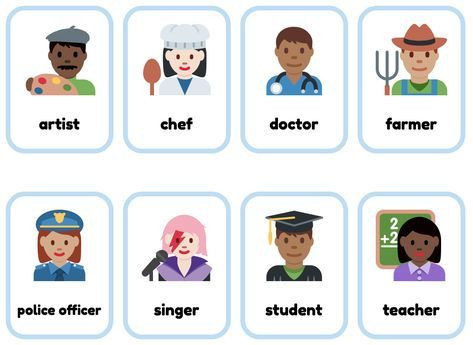The importance of Vietnamese culture in the workplace.
Getting a job in another nation requires more than just finding a job and working hard. It’s also about getting a sense of the country’s cultural and business environments.
Adapting to the country’s business culture is, in essence, one of the most important talents to learn and one of the least discussed. If not handled correctly it can lead to miscommunication, frustrations, and uncomfortable situations.
It is necessary for those doing business or working in Vietnam for the first time to become acquainted with the country’s unique culture and traditions. Those who do will have an easier time finding work in the country.
Vietnam Cultural Traditions.
Understanding the business culture of Vietnam might help you connect with colleagues and avoid cultural misunderstandings.
Vietnams traditions have a long history throughout Southeast Asia. Learning about these traditional, well-respected cultural norms will make working in this country much easier.
Let’s take a look at some of the most important aspects of Vietnamese business culture, including some basic business conventions and etiquette.
Vietnamese greetings.
While English is becoming more popular, Vietnamese remains the most widely spoken language, with 86 percent of the people speaking it.
If a foreigner tries to learn simple phrases in Vietnamese, such as “xin chao” (pronounced “seen chow”), which means “hello,” the Vietnamese will be appreciative.
Saying hello and farewell is usually done with a handshake and a small bow of the head. Also, note that Vietnamese names are written in the following order: surname name, middle name, first name. Learn Vietnamese with the Mondly app.

Some basic Vietnamese cultural points.
Seniority and respect are prominent notions in Vietnam, influenced by Confucianism’s hierarchical structure; most Vietnamese believe they have a responsibility to respect those who are older than them.
Vietnamese people are very punctual, especially in business and in the classroom. However, a 5-minute lateness tolerance is usually acceptable.
Outside of the office, Vietnamese people typically need to create personal trust in order to improve teamwork and collaboration.
Attire: Due to the hot heat, Vietnamese people, particularly those from the south, dress informally. Suits and ties aren’t as popular as they once were, but wearing a t-shirt and trousers to class is a no-no.
‘Face’
“Face” is incredibly significant in Vietnam, as it is in many other Asian countries. While being candid and straightforward is a positive trait in the West,
in Vietnam, open dissent or raising issues in public can be perceived by the receiver as “losing face.” “Face” is a notion that approximately translates to “represents a person’s reputation, dignity, and prominence.”
Foreigners should be conscious that their words or behavior may accidentally cause a loss of face.
The most important thing to remember is to treat your coworkers with respect. If you have any recommendations or concerns, it’s preferable to discuss them in private.
Personal questions.
Many Vietnamese will ask questions that may seem personal to a foreigner. Discussing one’s family and personal life is normal and is seen as a sign of friendliness and interest.
Now we have covered the basics let us look at the culture of the classroom.
learning classroom Culture for the ESL teacher.
English is currently regarded by the Vietnamese as a language that can lead to personal achievement and worldwide opportunities. This is why the present generation of young learners want to learn English as a second language.
This necessitates parental involvement in the learning process, as they encourage their children to study hard and do their best in order to get high grades. When you work as an ESL teacher in a Vietnamese school, you may observe this.
You may also want to look at Culturally Responsive Education by Cynthia M. Douglas, PhD.
The classroom culture.
The Vietnamese place a high priority on promptness. Every day, you should arrive on time for class. However, teachers may be late due to inclement weather or traffic. In Vietnamese schools, there is also a dress code.
Although there is a lot more to say about this, the key point is that they dress conservatively. Depending on the school you attend, business casual is preferred or something a little more casual and relaxed.
Also, if you have a tattoo, cover it up as tattoos are still associated with criminals in Vietnam.
East vs. West.
Students at Western schools volunteer to respond to a question. Vietnamese students Vietnam, on the other hand, wait for the teacher to summon them. Pupils who answer when they are not called are penalized by their teachers.
Furthermore, it is common to see a teacher sitting at their desk, drinking or eating in class, playing games, or performing other personal things.
However, as an ESL teacher, I can assure you that this is not the case. Vietnamese students Vietnam are accustomed to seeing teachers as authoritative figures., so making friends with teachers is not a normal option.
The students.
Vietnamese students will tell you how confined their lives are. However, this is the standard in the country. They have a very competitive job market, which means that if you want to succeed, you must stay at the top of your class.
Vietnam has changed over the course of its war-torn history. It now boasts a thriving economy that provides incredible chances for its kids – but only for those who work hard.
This entails extended school-days, as well as the prospect of evening studies. Many Vietnamese students learn English as well, as it is now a prerequisite for those who complete higher school.
Outside the classroom.
Vietnam’s culture is deeply influenced by its rice paddies, mountains, oceans, and rivers. As a result, they consider it impolite to refuse to eat or finish your food, particularly if you are a visitor at someone’s home and they have prepared a meal for you.
If you are invited to someone’s home, try not to put too much in your bowl. Also, don’t forget to praise your hosts.
The Vietnamese are also open about their society’s difficulties. The subject might be anything from traffic to pollution to academic cheating to corruption.
Remember that when foreigners begin to criticize, they find it a bit arrogant and may take offense. Like anywhere, it is best to get to know your hosts before talking about anything controversial
Find out a lot more about etiquette in Vietnam in my previous post. Etiquette in Vietnam.
Conclusion.
Vietnamese culture is vivacious, inviting, and welcoming. It’s no different from other countries in that it’s full of nuanced details that take time to grasp.
However, unlike in current Western societies, Vietnamese culture places a strong emphasis on family, even into adulthood.
Family reputation and well-being are extremely important to the Vietnamese. This indicates that each family takes pride in supporting their children to succeed in school and in their careers.
Being aware of cultural differences will make a big difference to your stay in Vietnam.
Who am I?
My name is Stephen and I have lived in Vietnam for 15 years and have my own school. I am also the author and owner of this website.
If you would like to see a bit of Vietnam click on the YouTube link below.
Privacy Policy
Any or all links on this site may be affiliate links, and if you purchase something through those links I will make a small commission on them.
There will be no extra cost to you and at times due to my affiliation, you could actually save money.
You can read our full affiliate disclosure here.




















